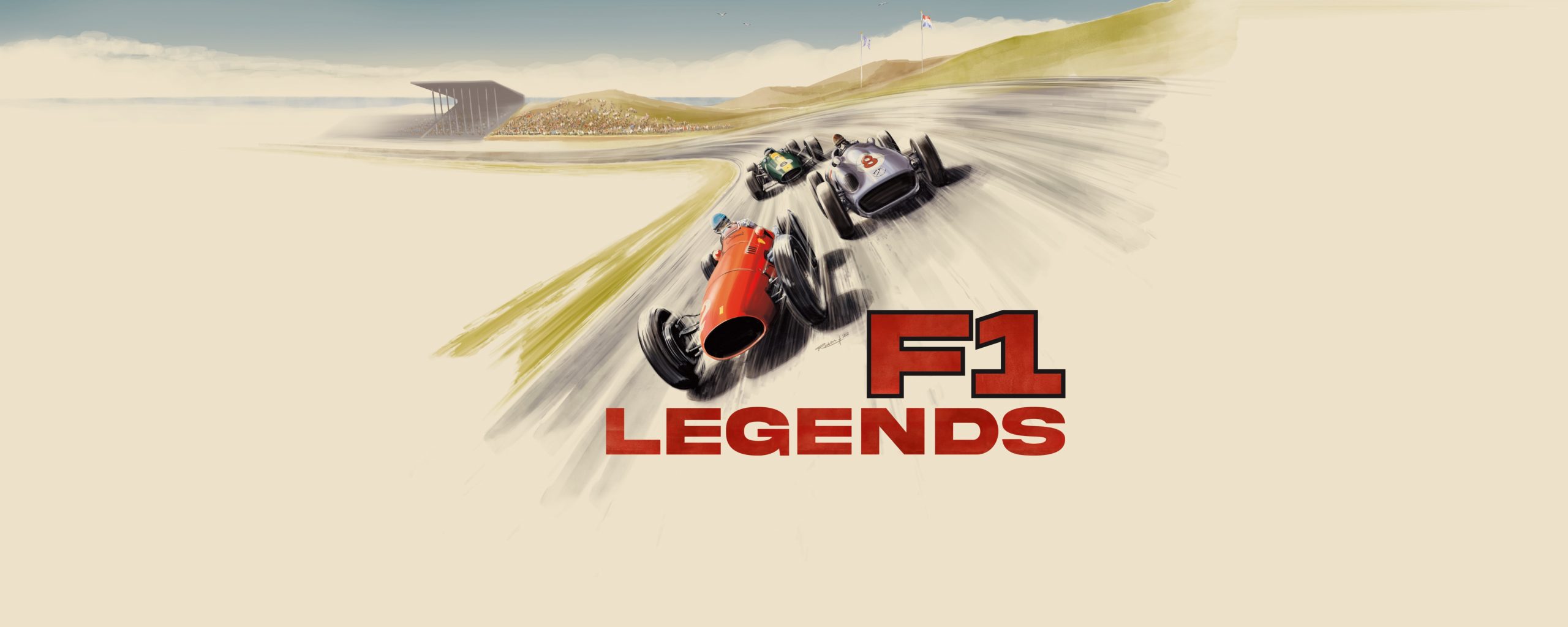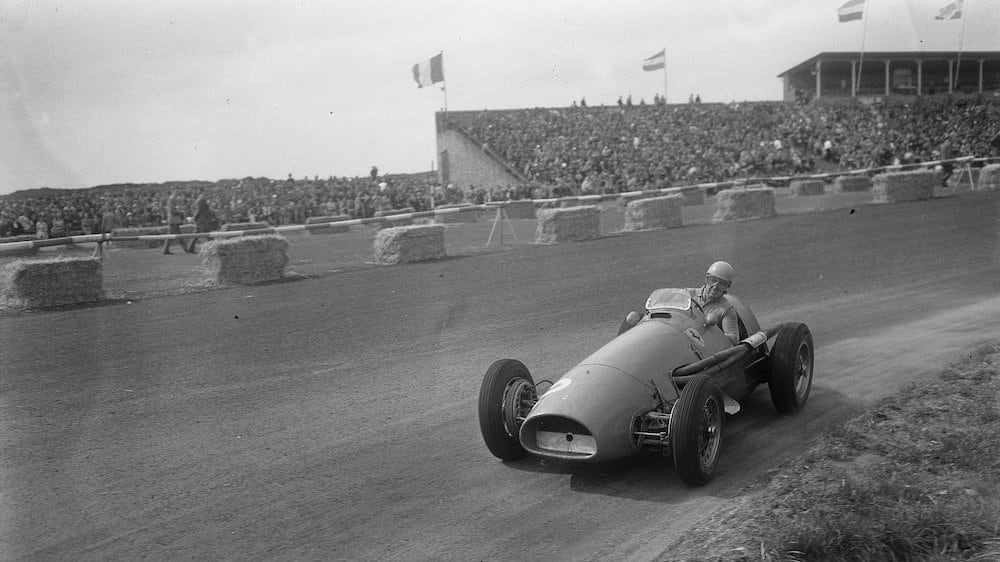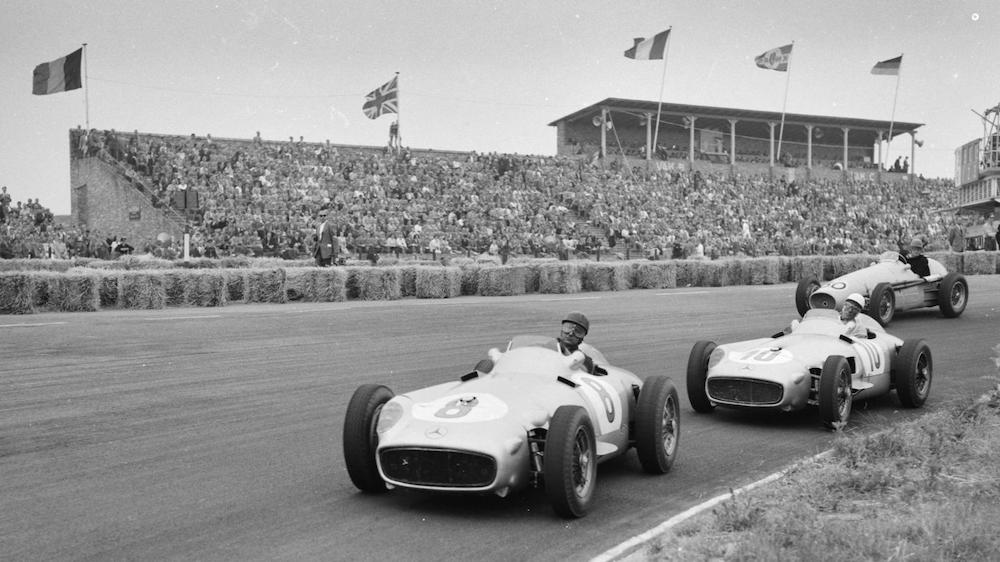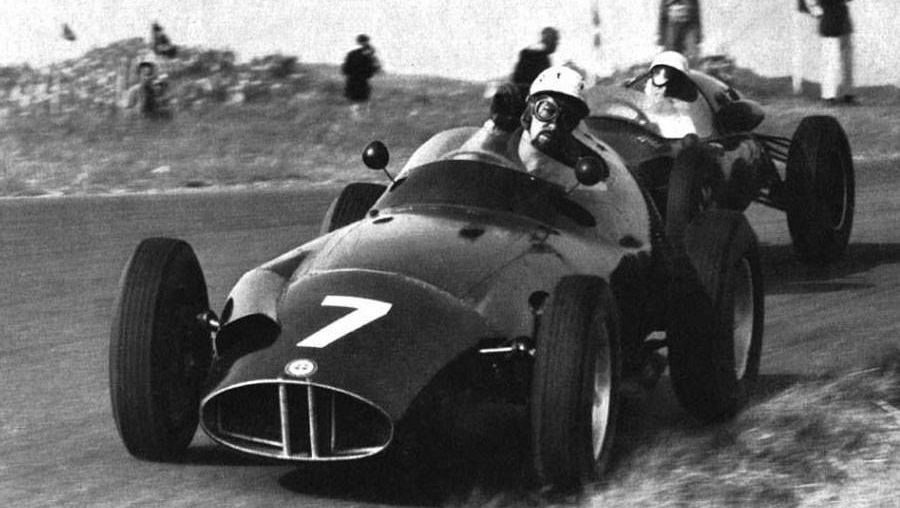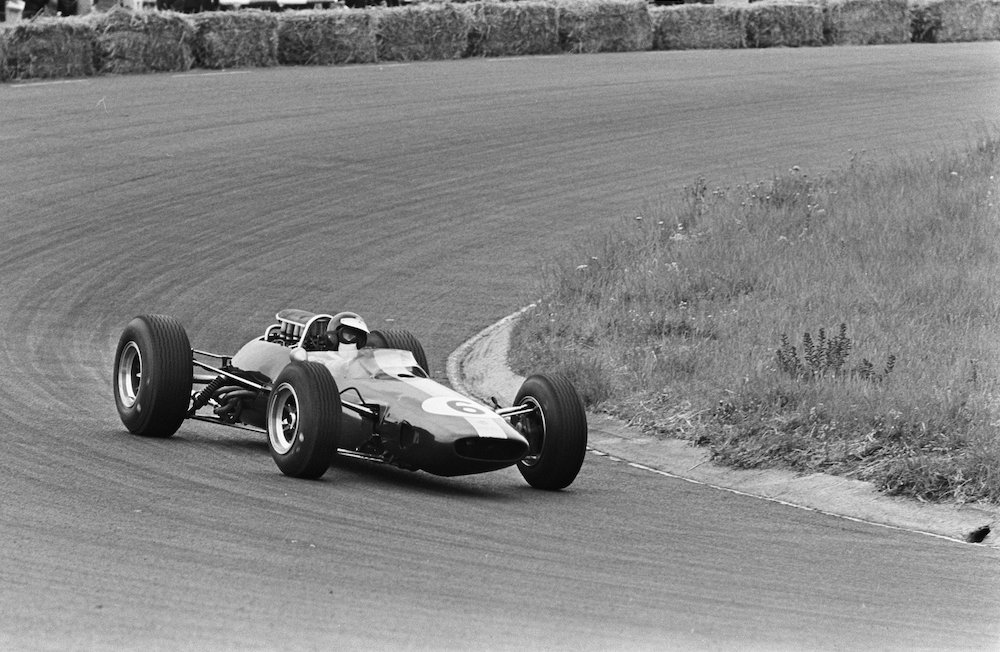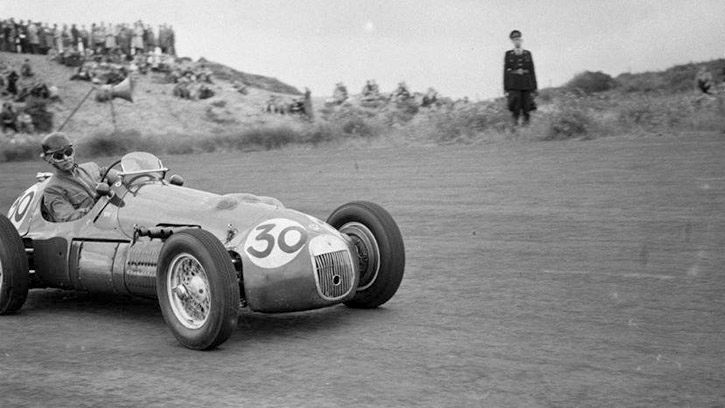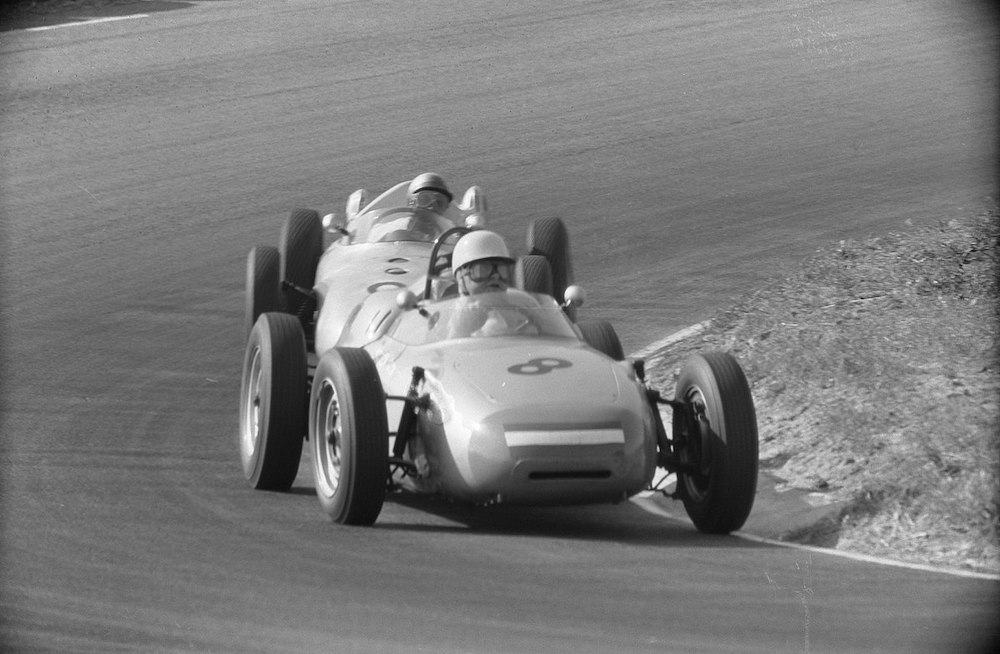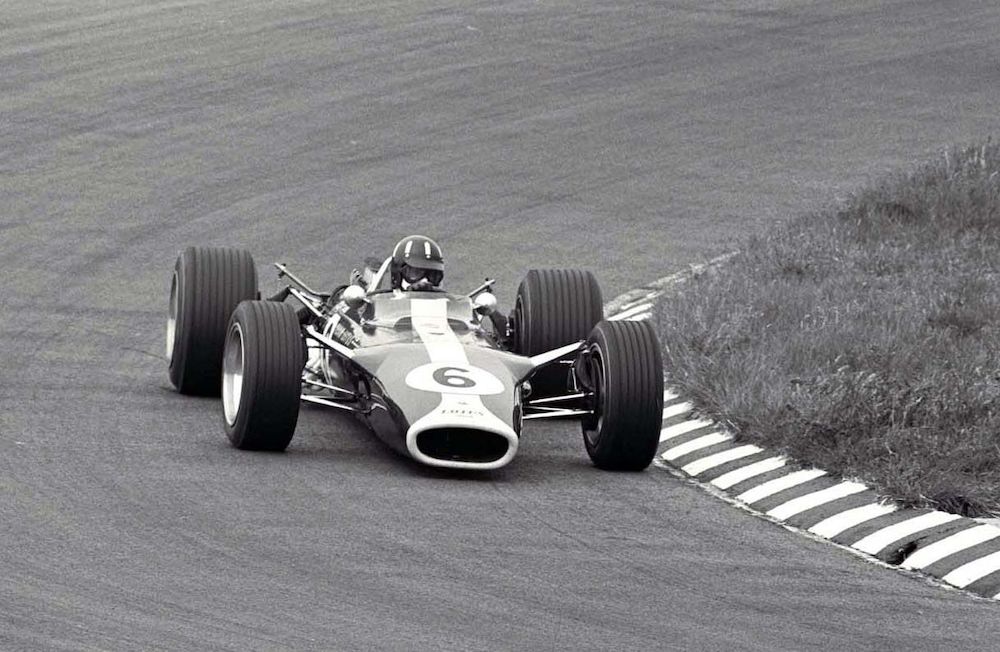Step into the history of the Zandvoort Grand Prix during the unique F1 Legends exhibition.
The return of the Dutch Grand Prix at Zandvoort in 2021 follows on from a historical period of motor racing in this country. From 1 July to 4 September the Louwman Museum is hosting an exhibition that celebrates the Formula 1 races held at Zandvoort between 1948 and 1970. Highlights of the special exhibition are undoubtedly the winning Ferrari 500 F2 (1952/1953) driven by Alberto Ascari, Juan Manuel Fangio’s victorious Mercedes-Benz W196 (1955) and the winning Lotus 33 (1965) driven by Jim Clark.
Alberto Ascari - Ferrari 500 F2
Winner of the Dutch Grand Prix 1952 and 1953
At the end of 1951 Alfa Romeo had withdrawn from Formula 1, leaving arch-rival Ferrari with the only competitive cars for 1952. The engine was developed by Aurelio Lampredi to the 1952/53 regulations and mounted in a Formula 2 chassis. This turned out to be a successful combination as Albert Ascari, the No. 1 driver for Ferrari, became World Championship two years in succession by winning practically every race in both seasons. The racing car on display was driven to victory by Ascari seven times in succession in 1953. That record stood until 2013. Furthermore, Ascari was Ferrari’s first world champion.
Juan Manuel Fangio - Mercedes-Benz W196
Winner of the Dutch Grand Prix 1955
In 1954 Mercedes-Benz decided to return to the highest class of motor racing. Their Formula 1 car was technically highly advanced. The engine used desmodromic valve gear (without valve springs) which was unique, and the location of the large drum brakes inside the bodywork instead of in the wheels, was also a first for Formula 1. Furthermore, Mercedes-Benz hired the former Argentine world champion, Juan Manuel Fangio. This soon proved to be an unbeatable combination, resulting in Fangio’s second world title in 1954. The following year, 1955, was a repeat performance, this time supported by his British team-mate, Stirling Moss. Mercedes-Benz withdrew from motor sport at the end of 1955. Fangio won the race at Zandvoort closely followed by Stirling Moss.
Jo Bonnier - BRM P25
Winner of the Dutch Grand Prix 1959
This car gave British Racing Motors (BRM) their first Formula 1 victory and its driver, Swede Jo Bonnier, his first win. Bonnier would later make a name for himself in sports car racing. The design of the BRM is similar to that of the Vanwall, but was built in its entirety by BRM. BRM later became a very successful racing team in the 1500 cc Grands Prix.
Jim Clark - Lotus 33
Winner of the Dutch Grand Prix 1965
This is the championship car raced by the legendary Jim Clark. He won the 1965 Formula 1 championship with ease. It is not just a very good-looking car, it was also extremely fast. The 33 was the successor to the equally successful Lotus model 25, the first monococque design in Formula 1, in which Clark became world champion in 1963. The Lotus 33 was further refined and fitted with the existing 1497 cc Coventry Climax V8 unit. This engine had about the same power as the 12-cylinder Ferrari, but the Lotus proved to have better handling. So Clark won the race at Zandvoort in 1965. In 1966 the engine size was increased to 2 litres, but even so it remained competitive racing against cars with 3-litre engines that adhered to the new regulations. This car is widely recognized as the most beautiful Lotus racing car ever built.
Dries van der Lof - HWM-Alta
Entered the Dutch Grand Prix in 1952
Hersham and Walton Motors (HWM) was a classic example of a Formula 1 team from the early days of this racing class. HWM made use of an existing Formula 2 car for the 1952/53 Grand Prix season. The team got by financially by racing every weekend throughout Europe. Local drivers were often given a (paid) drive in a Grand Prix. Some well-known British drivers such as Stirling Moss and Peter Collins learnt their racecraft in HWMs. This car took part in the 1952 Grand Pix at Zandvoort but completed insufficient laps to be classified.
Carel Godin de Beaufort - Porsche 718
Entered the Dutch Grand Prix in 1963 and 1964
For the 1961 season the maximum engine size was set to 1500 cc. This was the same as for formula 2 in previous years. In those days you could buy a suitable car and compete in the Walhalla of motor racing, Formula 1. Dutch nobleman Carel Godin de Beaufort bought this Porsche and even won a number of championship points in 1963 and 1964, at the time a unique performance. Unfortunately he died in an accident at the Nürburgring in Germany in 1964.
Graham Hill - Lotus 49
Entered the Dutch GrandPrix in 1967
This car was driven in the 1967 season by two-time world champion Graham Hill. The sister Lotus 49 car, equipped with the brand new Ford-Cosworth DFV engine, won at Zandvoort (driven by Jim Clark) in its debut race. Ford had developed an advanced new V8 engine, in collaboration with Cosworth, at the instigation of Colin Chapman, the Lotus team principal. The engine formed a structural part of the chassis, a technology seldom seen before that time. It sported four valves per cylinder, fuel injection and delivered over 400 hp. The engine was also relatively inexpensive and readily available. 1967 marked the beginning of an unprecedented series of victories with this Ford-Cosworth engine: between 1967 and 1983 no fewer than 176 Grands Prix were won by cars powered by this engine. The Lotus 49 bore all the hallmarks of Lotus: lightweight, efficient and fast. Graham Hill became World Champion in this car in 1967.

